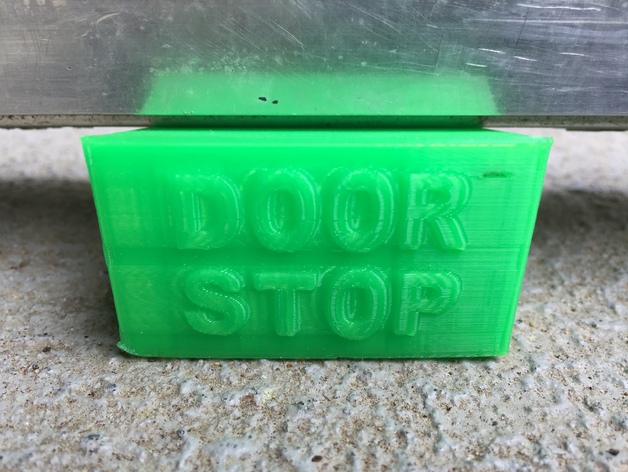
Everyday Solutions
thingiverse
One of the greatest promises desktop fabrication has to offer is a solution to everyday problems. Thanks to affordable 3D printers and easy-to-use design software, we can now identify a problem, design a solution, and manufacture a product in just a few hours. This lesson aims to make that concept real for students as young as kindergarten while also building their 3D modeling skills. For more on how I use 3D printing in my kindergarten classroom, check out my blog for Common Sense Education, "When My Kindergarten Class Got a 3-D Printer" (https://www.graphite.org/blog/when-my-kindergarten-class-got-a-3-d-printer). How I Designed This I used Tinkercad to design this thing with input from my students. But as mentioned in the Preparation section below, you can also hand the design process over to your students if learning some design basics is also an objective. Standards NGSS Overview and Background Children of all ages love to help others. This lesson aims to harness that inherent altruism as a way to introduce students as young as kindergarten to the powerful potential of 3-D printing. Objectives Students will gain knowledge in the many uses of 3D printing, how it can be used to solve problems in our everyday lives, and the basics of 3D modeling. Audience I taught this lesson to my kindergarten class, but it can be presented to any age group with just a little modification. Subjects Design Community Outreach Skills Learned (Standards) NGSS: K-2-ETS1-1, K-2-ETS1-2 Lesson Plan and Activity Introduce or solicit from students a problem at school, home, or abroad in need of a solution. Emphasize that some problems come in the form of replacing an item or part, and others result from new and novel ideas. In my classroom, it all began when the librarian lost her doorstop before our weekly visit to check out books. If you have not already done so, introduce students to the basic operation of 3D printers and some of their uses. See the Reference section below for links to several other examples of 3D printed solutions to real-world problems. The Handouts & Section below also includes some suggested picture books for younger students relating to the importance of lending a helping hand. Design your solution(s) whole class, with student input, for lower grades, and allow older students to try their hand at designing. If using Tinkercad, the tutorial lessons are great ways to get started in little more than a single class session. Print, test, and redesign things, emphasizing the iterative design process to students. Duration of Lesson 3-5 sessions (more sessions may be needed if middle or high school students create their own designs) Preparation Identifying an appropriate problem in need of a solution prior to beginning the lesson can make the process seem more organic, but isn't necessary. Bringing a problem in need of a design solution to the class, whether the problem is at your school or on the other side of the world, will go just as far to help students understand the potential held in 3D printing. References For some 3D printed inspiration check out E-Nabling the Future (http://enablingthefuture.org/). E-Nabling describes itself as "A Global Network Of Passionate Volunteers Using 3D Printing To Give The World A Helping Hand." and features ample stories of people using 3D printing to address the need for new corners on a pool table. I also tried my hand at making a contribution beyond the classroom to help my cousin, who works at our local Senior Resource Center. Their basement pool table was in need of new corners, but at $75 each, that wasn't going to happen. After designing replacements at home I shared with my students the purpose of my project and printed a set for the seniors. That thing can be found here on Thingiverse (http://www.thingiverse.com/thing:1467462). Rubric & Assessment: Final product and assessments can take many forms, from written reflections to presentations or recorded interviews of students sharing how desktop fabrication can positively impact their lives. If a more global approach to problem solving is your focus, writing a blog, creating a Facebook page, or establishing a simple website regarding the issue being addressed may be in order. Handouts & Assets: There are many wonderful children's books on the subject of kindness and helping others that can be used to introduce this lesson. Here is one list to consider: http://humaneeducation.org/blog/2013/06/24/10-childrens-picture-books-kindness
With this file you will be able to print Everyday Solutions with your 3D printer. Click on the button and save the file on your computer to work, edit or customize your design. You can also find more 3D designs for printers on Everyday Solutions.
